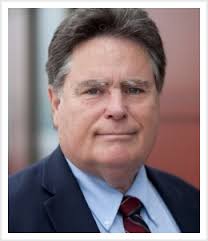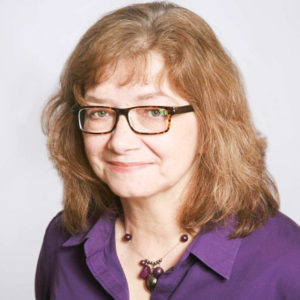Contact Mace News President
Tony Mace tony@macenews.com
to find a customer- and markets-oriented brand of news coverage with a level of individualized service unique to the industry. A market participant told us he believes he has his own White House correspondent as Mace News provides breaking news and/or audio feeds, stories, savvy analysis, photos and headlines delivered how you want them. And more. And this is important because you won’t get it anywhere else. That’s MICRONEWS. We know how important to you are the short advisories on what’s coming up, whether briefings, statements, unexpected changes in schedules and calendars and anything else that piques our interest.
No matter the area being covered, the reporter is always only a telephone call or message away. We check with you frequently to see how we can improve. Have a question, need to be briefed via video or audio-only on a topic’s state of play, keep us on speed dial. See the list of interest areas we cover elsewhere
on this site.
—
You can have two weeks reduced price no-obligation trial for $199. No self-renewing contracts. Suspend, renew coverage at any time. Stay with a topic like trade while it’s hot and suspend coverage or switch coverage areas when it’s not. We serve customers one by one, 24/7.
—
Tony Mace was the top editorial executive for Market News
International for two decades.
Washington Bureau Chief Denny Gulino had the same title at Market News for 18 years.
Similar experience undergirds our service in Ottawa, London, Brussels and in Asia.

President
Mace News

D.C. Bureau Chief
Mace News

Federal Reserve
Mace News

Reporter and expert on the currency market.
Mace News

Reporter and expert on derivatives and fixed income markets.
Mace News

Financial Journalist
Mace News

Reporter, economic and political news.
Japan and Canada
Mace News
– May Have To Leave Rates Unchanged Longer Or Hike Rates If Inflation Worsens
By Steven K. Beckner
(MaceNews) – Although downside risks to the labor market have increased, so have upside risks to inflation and inflation expectations, and such a combination could create a difficult monetary policy dilemma, St. Louis Federal Reserve Bank President Alberto Musalem warned Wednesday.
While allowing for a resumption of interest rate cuts if the economy and/or labor market soften further, he allowed for extending the current “modestly restrictive policy” for a longer period, or even tightening policy if inflation and inflation expectations worsen.
Musalem, a voting member of the Fed’s rate-setting Federal Open Market Committee, said the FOMC would prefer to take “a balanced approach” when both inflation and employment diverge from its goals, but he said that would become difficult if longer term inflation expectations become “unanchored.” Should that happen, he said the FOMC would have to focus on fighting inflation, not on growing the economy.
For the time being, Musalem, a voting member of the Fed’s rate-setting Federal Open Market Committee, said the Fed should take “a patient and vigilant approach” in pursuit of its dual mandate of maximum employment and price stability.
He told the Paducah, Kentucky, Chamber of Commerce he will be paying particularly close attention to longer term inflation expectations, noting some indications they have risen lately.
Although higher tariffs are likely to have limited direct effects on inflation, “indirect, second-round effects” on inflation could be more persistent and worrisome, Musalem cautioned
Musalem was speaking a week after he and his fellow Fed policymakers voted to leave the federal funds rate unchanged in a target range of 4.25% to 4.5%., while tilting toward further rate cuts. The 19 FOMC participants projected the policy rate will end 2025 at 3.9% (a range of 3.75% to 4.00%) in the quarterly Summary of Economic Projections – the same as in the December SEP.
Following the March 19 meeting, Chairman Jerome Powell repeated his belief that monetary policy is “in a good place” and that the FOMC needs be in “no hurry” to cut rates. He called the economy and labor markets “solid,” while expressing concern about the potential for tariffs to increase inflation, if only in a “transitory” fashion. The combination of increased inflation and slower growth forecasts in the SEP “cancel(led) each other out” and led officials to leave their rate projections unchanged, he said.
Powell continually emphasized “heightened uncertainty about the economic outlook,” given market-shaking changes in trade and other policies propounded by President Trump since his inauguration. “(I)t’s just …. really hard to know how this is going to work out…”
“(W)e think our policy is in a good place … where we can move in the direction where we need to,” he continued. “But in the meantime, it’s really appropriate to wait for further clarity, and of course, … the cost of doing that, given that the economy is still solid, are very low.”
Like Powell, Musalem stressed economic and policy uncertainties, particularly with regard to tariffs, and suggested that the FOMC will have to be very careful how it responds, lest it make a policy mistake. He put particular emphasis on inflation expectations.
For the present, he said, “If the economy remains strong and inflation remains above our target, then I believe the current, modestly restrictive policy will remain appropriate until there is confidence inflation is converging to 2%.”
But the appropriate policy stance could change, depending on how things evolve, he added. “If the labor market remains resilient and the second-round effects from tariffs become evident, or if medium- to longer-term inflation expectations begin to increase actual inflation or its persistence, then modestly restrictive policy will be appropriate for longer or a more restrictive policy may need to be considered.”
On the other hand, “If labor market conditions were to deteriorate, with inflation stable or declining toward target and inflation expectations anchored at a level consistent with 2% inflation, policy could be eased further,” Musalem said in prepared remarks.
“At this juncture, a patient approach, involving careful assessment of incoming information, the outlook and risks, will help us as we seek maximum employment, price stability and a durable economic expansion,” he continued.
For the SEP, Musalem said he had both lowered his GDP growth forecast and increased his inflation forecast after noting that already “recent convergence toward the target has been little, even before potential tariff effects.” He declined to give his funds rate “dot.”
He warned that “the risks that inflation will stall above 2% or move higher in the near term appear to have increased.”
What’s more, Musalem noted that “near-term inflation expectations have risen, with higher tariffs often cited as the main driver.”
“Thus far, market data and surveys suggest that longer-term inflation expectations have not risen appreciably and have in fact been stable, but the most recent University of Michigan survey of consumers is a notable exception,” he added.
Musalem expects “the economic expansion will continue at a moderate pace, the labor market will remain healthy around full employment, and inflation will decline to 2% by 2027.”
“However, I see the risks as skewed toward some further cooling of the labor market and inflation remaining above 2% or possibly rising in the near term,” he went on, adding that “a scenario involving labor market softening and above-target or rising inflation would present a challenging environment for monetary policy.”
Tariff increases complicate the Fed’s job, Musalem made clear. While the “direct effects” of higher tariffs on imported goods would likely have limited, “one-off” effects, he said, indirect effects “could contribute to more persistent underlying inflation through second-round effects on non-imported goods and services.”
For monetary policymakers, “it could be appropriate to ‘look through’ direct effects of higher tariffs on the price level,” but said it may need to “lean against indirect and second-round effects.”
Musalem, who succeeded Jim Bullard as head of the Fed’s eighth district nearly a year ago, cautioned his listeners to “be wary of assuming that the impact of tariff increases on inflation will be entirely temporary, or that a full ‘look-through’ strategy will necessarily be appropriate.”
“I would be especially vigilant about indirect, second-round effects on inflation. I would also be uncomfortable if medium- to longer-term inflation expectations begin to rise,” he went on, adding “With inflation already above 2% in a full-employment economy, the stakes are potentially higher than they would be if inflation were at or below target.”
Musalem said it is “probable” the economy will face both slower growth and higher inflation, although he said he is expecting neither recession nor stagflation. But he suggested that wouldn’t be a big problem so long as longer-term inflation expectations are well anchored. Then, “monetary policy can be responsive to both sides of the dual mandate…”
If the Fed were to face weaker growth and higher inflation, he acknowledged “that presents some challenges for monetary policy…both sides of mandate working in opposite directions, and we only have one instrument.”
In such a situation, he said the FOMC would “adopt a “balanced approach.”
It would be “setting interest rates with a few things in mind,” he explained. “Understanding how far off we are from the employment/growth side of the target..and how far off inflation is from the target and balance that.”
He said the FOMC would also need to “consider what is the convergence time..for those two variables. That’s the balanced approach.”
However, Musalem emphasized that the key is keeping medium- to longer-term inflation expectations “well anchored.” The worst of all possible worlds, he suggested, would be if tariffs or other factors drove up inflation while at the same time hurting the economy in a climate of rising longer term inflation expectations.
“That balanced approach works well when inflation expectations are anchored,” he elaborated,but “if inflation expectations threaten to become unanchored or are unanchored, then the balanced approach may not work…”
Then, “we would probably have to lean into the inflation side to make sure inflation and inflation expectations remain anchored,” he said, because “ultimately, we cannot generate full employment if inflation expectations are not anchored.”
Following up on Musalem’s comments in a media scrum, MaceNews asked him whether he believes the FOMC should fight inflation even at the cost of recession if inflation expectations become unanchored in a climate of economic weakness and elevated inflation.
Musalem responded by suggesting the FOMC would have little choice but to focus on fighting inflation. “It is very difficult to achieve maximum employment without price stability,” he replied. “That’s the reason why if inflation expectations were to rise or become unanchored, the balanced approach may no longer be the best approach.”
Were inflation expectations to become unanchored, “we would probably have to think a little harder about the price side of the mandate,” he also told reporters.
Inflation expectations have become an increasingly touchy issue for Fed policymakers, especially since the University of Michigan disclosed that its consumer sentiment survey found that five to 10-year inflation expectations had risen to 3.9% in February — highest reading since 1993.
Last Wednesday, Powell continued to call longer term inflation expectations “well anchored,” referring to a leap in the University of Michigan’s five-to-10-year measure as “an outlier.”
Earlier this week, New York Fed President John Williams also said, “there are no signs of inflation expectations becoming unmoored relative to the pre-pandemic period.”
But Musalem is not the only one who sounds less sanguine. Fed Governor Adriana Kugler said on Tuesday she is “paying close attention to the acceleration of price increases and higher inflation expectations, especially given the recent bout of inflation in the past few years.”
– Powell: ‘Not in Any Hurry to Move,’ ‘Well Positioned to Wait For Clarity’
– SEP Retains December Dots While Forecasting More Inflation, Less GDP Growth
– Powell: Slower Pace of Balance Sheet Run-Off Has No Monetary Policy Import
By Steven K. Beckner
(MaceNews) – Faced with softer economic activity and uncertainty about the outlook but also with increased inflation expectations, the Federal Reserve took a cautious, restrained approach in charting the 2025 course for monetary policy Wednesday.
The Fed’s policymaking Federal Open Market Committee left short-term interest rates unchanged again but opened the door wider to a resumption of monetary easing at future meetings. In fact, despite speculation that the rate-setting body might lower the key federal funds rate by only 25 basis points this year, participants projected a total of 50 basis points of cuts.
But Chair Jerome Powell again said the Fed is in “no hurry” to cut rates and said it is “well-positioned to wait for further clarity” in his post-FOMC press conference.
The FOMC decided to scale back its “quantitative tightening” policy of shrinking the Fed’s balance sheet, announcing it would slow the pace at which it reduces its Treasury security holdings as of April 1. But Powell downplayed the monetary policy significance of the move.
The FOMC policy statement highlighted “increased” uncertainty about the economic outlook in the context of rapid changes in trade and other policies by the new Trump administration. The statement also deleted a previous assertion that risks to its “price stability” and “maximum employment” mandates were “roughly in balance.”
Powell reinforced the message that greater uncertainty is keeping the Fed on hold for now.
He continued to describe the economy and labor markets as “strong” or “solid,” but took note of the deterioration of consumer sentiment about the economic outlook in the context of uncertainty about the Trump administration’s trade and other policies, while also focusing on remaining Fed worries about inflation and inflation expectations.
For the second straight meeting, the FOMC left the key federal funds rate unchanged after cutting its policy rate by 100 basis points at the last three meetings of 2024. In a unanimous vote, it kept the funds rate in a target range of 4.25% to 4.5%.
However, FOMC participants lent some encouragement to Wall Street hopes for additional rate cuts by projecting that the funds rate will end this year at a median 3.9% (a target range of 3.75-4.00%),implying two 25 basis point cuts in coming months. That is the same projection contained in the Committee’s December Summary of Economic Projections.
The FOMC participants also kept the December funds rate projections for 2026 (3.4%) and for 2027 (3.1%).
They left unchanged at 3.0% their estimate of the “longer run” or neutral funds rate.
The new funds rate “dot plot” was accompanied by major revisions to economic forecasts.
The officials now forecast that PCE inflation will end 2025 at 2.7% – compared to the 2.5% forecast in December. Core PCE inflation is expected to close out this year at 2.8, compared to 2.5% in December. PCE inflation is forecast to fall to 2.2% in 2026 and to 2.0% in 2027.????
While increasing their inflation forecast, FOMC participants cut their GDP growth forecast from 2.1% to 1.7% — a hair below their 1,8% estimate of the longer run GDP growth rate (or “potential”). The unemployment rate is forecast to rise to 4.4%, down from 4.3% in the December SEP.
As for balance sheet policy, the FOMC said it “will continue reducing its holdings of Treasury securities and agency debt and agency mortgage‑backed securities.”
However, it added, “beginning in April, the Committee will slow the pace of decline of its securities holdings by reducing the monthly redemption cap on Treasury securities from $25 billion to $5 billion. The Committee will maintain the monthly redemption cap on agency debt and agency mortgage-backed securities at $35 billion.”
In its policy statement, the FOMC made two notable language changes. In an addition, it said, “Uncertainty around the economic outlook has increased.”
The FOMC dropped a previous assertion that “the Committee judges that the risks to achieving its employment and inflation goals are roughly in balance.” But Powell advised reporters not to make too much of that deletion.
The FOMC did not add any new note of concern about inflation expectations, as some had speculated it might despite some unfavorable readings in that area.
After the January 28-29 FOMC meeting and in subsequent comments, Powell said the Fed need not be “in a hurry” to cut rates, given “solid” economic and labor market conditions. For instance, after the Labor Department released modestly softer but still relatively strong February job numbers, he said “the costs of being cautious are very, very low. We can wait, and we should wait.”
After Wednesday’s meeting, Powell said much the thing about not being in a hurry, but took a somewhat different tack by repeatedly emphasizing the climate of heightened uncertainty in which the Fed must operate.
For now, he said, it is appropriate for monetary policy to remain on hold, but suggested it may need to be adjusted as the impact of trade and other policies becomes more clear.
Ahead of the meeting, mixed economic data came in. Slower consumer spending spurred lower estimates of economic growth – minus 1.8% according to the the Atlanta Federal Reserve Bank’s latest GDPNow forecast. The economy is still seen near “full employment,” with the unemployment rate staying at 4.1% in February, but non-farm payroll gains rose a less than expected 151,000, and Fed officials have said they are keeping a close eye on signs of softening in the labor market.
Meanwhile, inflation has made only halting progress toward 2%. Although the consumer price index rose a slower 0.2% last month, it was still up 2.8% from a year earlier (3.1% on a “core” basis). And after producer prices came in 3.2% year over year in February, economists estimated that the price index for personal consumption expenditures (PCE), the Fed’s preferred inflation gauge, likely accelerated to a 2.7-2.8% pace last month.
Moreover, various gauges of inflation expectations worsened. Notably, the University of Michigan’s consumer sentiment survey showed long-term inflation expectations, which Powell & Co. have been calling “well anchored” until very recently, have risen to 3.9%, highest since 1993.
Overshadowing it all and causing financial market anxieties have been uncertainties about the economic impact of Trump trade, tax, regulatory and immigration policies.
Noting that the administration is in the process of implementing significant policy changes, Powell said “it is the net effect of these policy changes that will matter for the economy and for the path of monetary policy….”
“As we parch the incoming information we are focused on separating the signal from the noise as the outlook evolves…,” he continued. “(I)n considering the extent and timing of additional adjustments to the target range for the federal fund rate, the committee will assess the outlook and assessing risks.”
“We do not need to be to be in a hurry to adjust our policy straps and we are in greater position to wait for clarity,” he added.
Asked why he and his Fed colleagues again projected two rate cuts this year despite the higher inflation forecast, Powell noted that Fed officials also lowered their growth forecast and increased slightly their unemployment forecast. He said, “those two things kind of balance each other out.”
What’s more, because of participants’ uncertainty about the economic impact of Trump policies, he said many FOMC participants found it easier to just keep their December projections.
“We are going to have to see how thing actually work out,” Powell said, “and the fact that there wasn’t much change, I think that’s partly because you see weaker growth but higher inflation. They kind of offset.”
“And also frankly (there was) a little inertia when it comes to changing something in this highly uncertain environment,” he went on. “There’s a level of inertia where you say ‘I will just stay where I am.’”
Powell said Trump’s policies could have an adverse impact but said that for now there is an “overall solid picture,” even though surveys show “a significant rise in uncertainty and a significant rise in downside risks.”
In his view, it wouldn’t be appropriate for the FOMC to prejudge the actual impact of Trump policies and perhaps end up making a policy mistake in the process.
“We don’t dismiss” what he called “soft data” pointing to potential economic weakness, he said, adding that “we are watching it carefully.”
“But we don’t want to get ahead of that,” Powell said. “We want to focus on the hard data. If that’s going to affect the hard data we should know it very quickly. And of course we will understand that. But you don’t see that yet.”
Asked whether he expects a recession, Powell said that is always a possibility, but said he does not see the odds of a recession as being particularly high.
As he has before, Powell said the FOMC can move in different directions, depending on how the economy evolves.
“If the economy remains strong and inflation does not continue to move stain reply towards 2% we can maintain policy restraint for longer,” he said, but “if the labor market were to weaken unexpectedly or if inflation were to fall unexpected we can ease inflation accordingly.”
“Our current policy stand is well positioned to deal with the risks and uncertanties we are looking at in pursuing both sides of our mandate,” he added.
But, as he kept saying, at this juncture, “the right thing to do is to wait here for greater clarity about what the economy is doing.”
Asked whether the FOMC should refrain from cutting rates or even raise them, given greater infaltiion risks from tariffs, Powell replied, “if there’s an inflationary impulse that’s going to go away on its own, it’s not the right policy to tighten policy, because by the time you have your effect …. you are lowering economic activity and unemployment. And if that’s not necessary you don’t want to do it.”
He conceded that, because of tariffs, “further progress (in reaching 2% inflation) may be delayed.”
Powell tended to dismiss the bad University of Michigan reading on long-term inflation expectations, calling it “an outlier.”
“I’m not dismissing what we are seeing in short-term inflation expectations,” he said. “We… follow that very carefully but when we say expectations are well anchored we are really looking at longer terms, five years and out. And there’s really no story to tell five years and out, either in market based or in surveys….”
Powell also minimized the significance of the FOMC decision to slow the pace of QT, a decision which he said had broad support among members.
“It was the TGA flows, the treasury general account flows, that got us thinking about this,” he said. “But the more we thought about it we came around to (the view that slowing the pace of Treasury securities run-off) … fits in really nicely with our principles and our plans and the things we have done before and the thing we said we would do ….”
But he stressed, “it’s nothing to do with monetary policy; nothing to do with the size of the balance sheet. It’s just kind of a commonsense adjustment as you get closer and closer. Let’s slow down a little bit again.”
“And that way we will be more and more confident that we are getting where we need to get,” he continued. “You can take our time getting there. We are shrinking the balance sheet every Monday and we think it was a good play, and … well supported.”
Powell made clear that the FOMC has no plans to slow the pace of MBS run-off.
The Fed chief also cautioned reporters against reading too much into the statement’s deletion of language about the balance of risks.
“Sometimes with language it lives its useful life, and then we take it off, and that was the case,” he explained. “It was really not meant to be any signal here.”
WASHINGTON (MaceNews): The Federal Ope Market Committee Wednesday provided no surprises in its latest policy statement and the dot plot of participants still saw two rate cuts this year. The text of the statement follows:
Recent indicators suggest that economic activity has continued to expand at a solid pace. The unemployment rate has stabilized at a low level in recent months, and labor market conditions remain solid. Inflation remains somewhat elevated.
The Committee seeks to achieve maximum employment and inflation at the rate of 2 percent over the longer run. Uncertainty around the economic outlook has increased. The Committee is attentive to the risks to both sides of its dual mandate.
In support of its goals, the Committee decided to maintain the target range for the federal funds rate at 4-1/4 to 4-1/2 percent. In considering the extent and timing of additional adjustments to the target range for the federal funds rate, the Committee will carefully assess incoming data, the evolving outlook, and the balance of risks. The Committee will continue reducing its holdings of Treasury securities and agency debt and agency mortgage‑backed securities. Beginning in April, the Committee will slow the pace of decline of its securities holdings by reducing the monthly redemption cap on Treasury securities from $25 billion to $5 billion. The Committee will maintain the monthly redemption cap on agency debt and agency mortgage-backed securities at $35 billion. The Committee is strongly committed to supporting maximum employment and returning inflation to its 2 percent objective.
In assessing the appropriate stance of monetary policy, the Committee will continue to monitor the implications of incoming information for the economic outlook. The Committee would be prepared to adjust the stance of monetary policy as appropriate if risks emerge that could impede the attainment of the Committee’s goals. The Committee’s assessments will take into account a wide range of information, including readings on labor market conditions, inflation pressures and inflation expectations, and financial and international developments.
Voting for the monetary policy action were Jerome H. Powell, Chair; John C. Williams, Vice Chair; Michael S. Barr; Michelle W. Bowman; Susan M. Collins; Lisa D. Cook; Austan D. Goolsbee; Philip N. Jefferson; Adriana D. Kugler; Alberto G. Musalem; and Jeffrey R. Schmid. Voting against this action was Christopher J. Waller, who supported no change for the federal funds target range but preferred to continue the current pace of decline in securities holdings.
–ISM Manufacturing Index at 49.0 Vs. 50.3 in February, Below Consensus (49.6)–ISM’s Fiore: Activity ‘Overshadowed’ by US Import Tariffs; So Many Unknowns, More Confusion–Fiore: Still
By Max Sato (MaceNews) – The Bank of Japan’s quarterly Tankan business survey is forecast to show confidence among manufacturers slipped in the March quarter
– May Have To Leave Rates Unchanged Longer Or Hike Rates If Inflation Worsens By Steven K. Beckner (MaceNews) – Although downside risks to the
– Powell: ‘Not in Any Hurry to Move,’ ‘Well Positioned to Wait For Clarity’ – SEP Retains December Dots While Forecasting More Inflation, Less GDP
WASHINGTON (MaceNews): The Federal Ope Market Committee Wednesday provided no surprises in its latest policy statement and the dot plot of participants still saw two
By Max Sato (MaceNews) – Japan’s government maintained its cautiously optimistic assessment for the seventh straight month, saying the economy is expected to stay on

–US Equity Allocation Sees Biggest Monthly Drop on Record By Vicki Schmelzer NEW YORK (MaceNews) – A drop in expectations that the U.S. economy will
By Max Sato (MaceNews) – Canada’s new Prime Minister Mark Carney, who was sworn in Friday, vowed to protect his country from the threat of
Contact Mace News President
Tony Mace tony@macenews.com
to find a customer- and markets-oriented brand of news coverage with a level of individualized service unique to the industry. A market participant told us he believes he has his own White House correspondent as Mace News provides breaking news and/or audio feeds, stories, savvy analysis, photos and headlines delivered how you want them. And more. And this is important because you won’t get it anywhere else. That’s MICRONEWS. We know how important to you are the short advisories on what’s coming up, whether briefings, statements, unexpected changes in schedules and calendars and anything else that piques our interest.
No matter the area being covered, the reporter is always only a telephone call or message away. We check with you frequently to see how we can improve. Have a question, need to be briefed via video or audio-only on a topic’s state of play, keep us on speed dial. See the list of interest areas we cover elsewhere
on this site.
—
You can have two weeks reduced price no-obligation trial for $199. No self-renewing contracts. Suspend, renew coverage at any time. Stay with a topic like trade while its hot and suspend coverage or switch coverage areas when it’s not. We serve customers one by one 24/7.
—
Tony Mace was the top editorial executive for Market News International for two decades.
Washington Bureau Chief Denny Gulino had the same title at Market News for 18 years.
Similar experience undergirds our service in Ottawa, London, Brussels and in Asia.